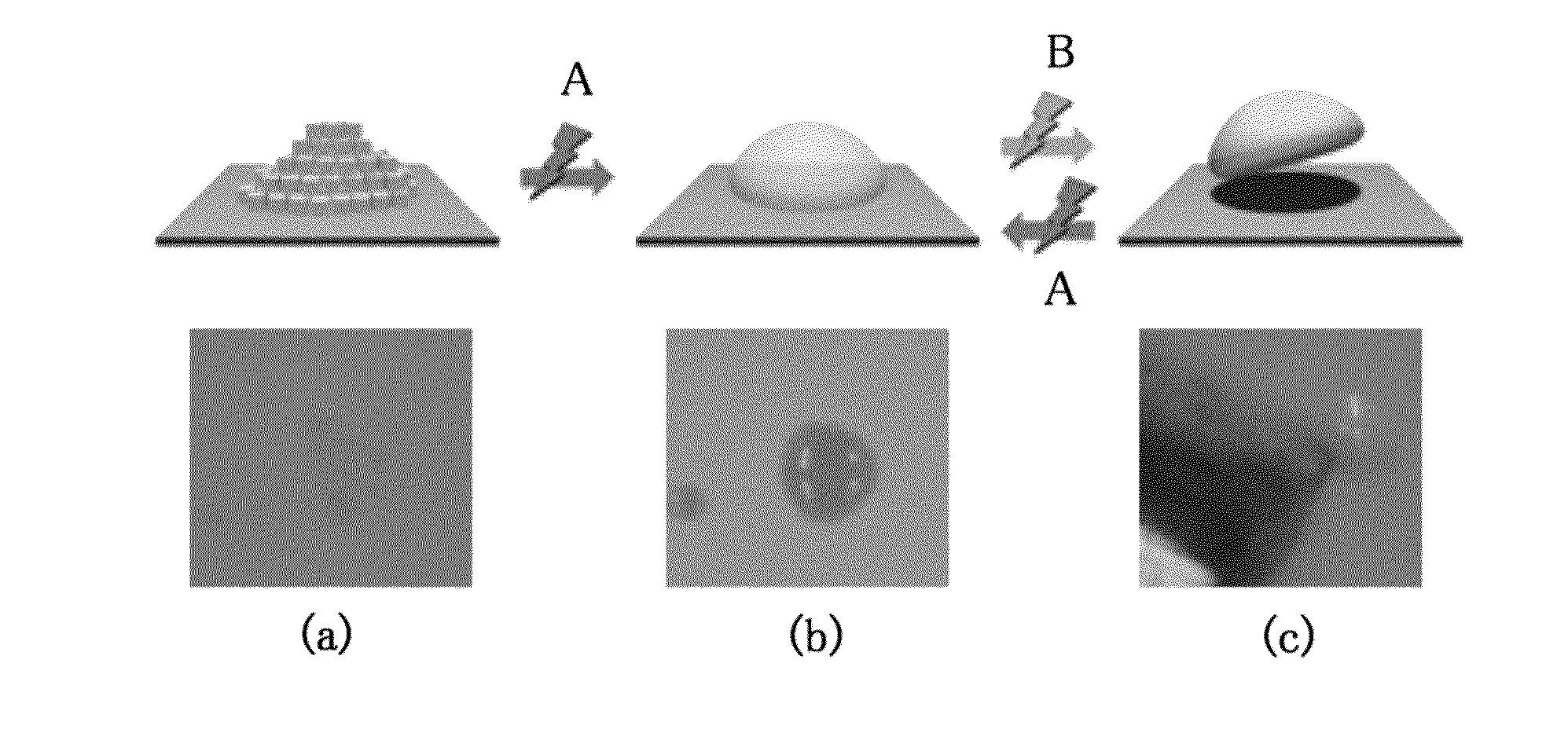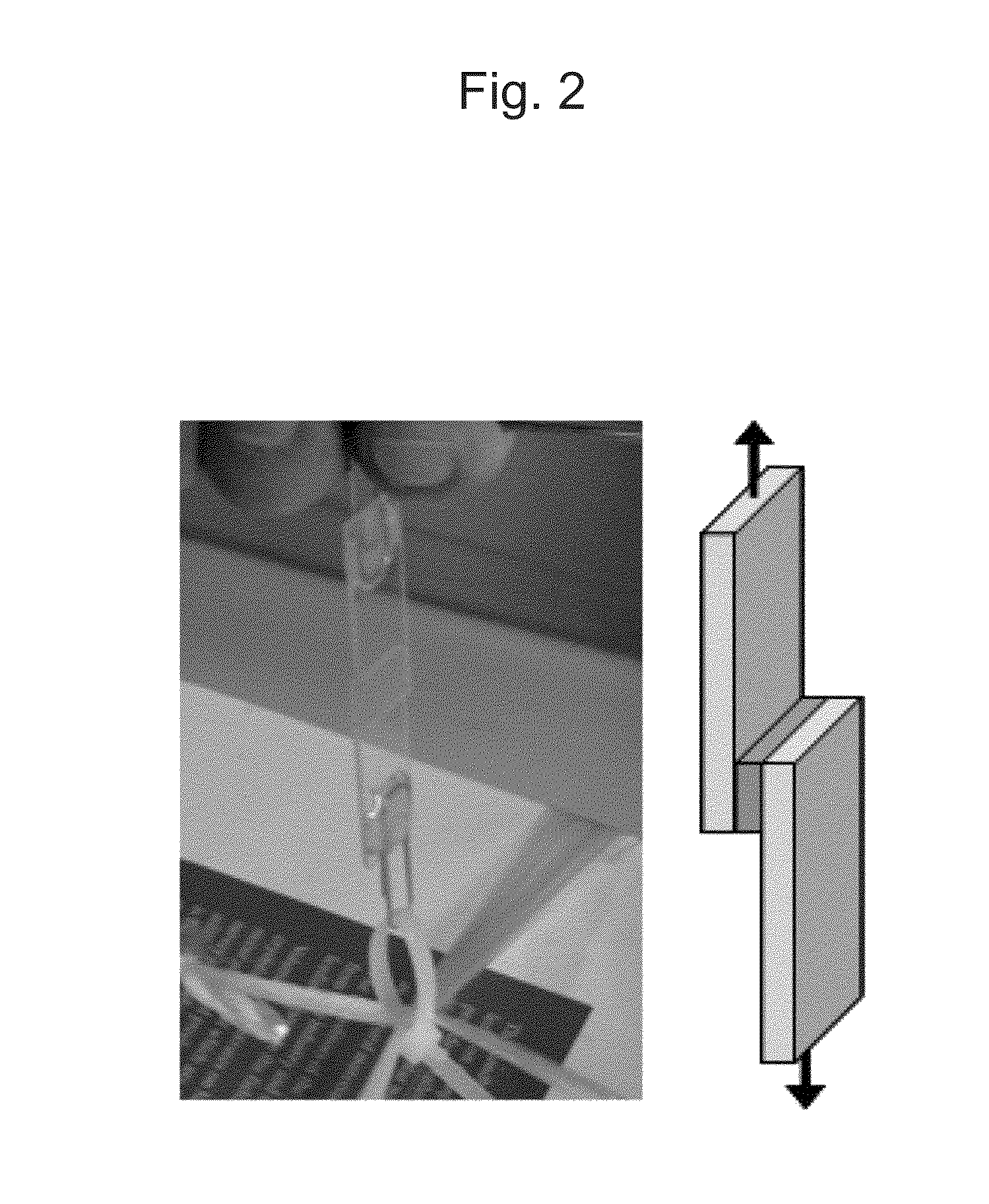Photo-reactive adhesive agent
- Summary
- Abstract
- Description
- Claims
- Application Information
AI Technical Summary
Benefits of technology
Problems solved by technology
Method used
Image
Examples
example 1
[0050]10-[4-{(4-hexyl)phenylazo}phenoxy]decyl acrylate was subjected to radical polymerization in a solution, and the liquid crystalline polymer compound (A) with the weight average molecular weight of 32,000 represented by Chemical Formula A below was obtained. A polymer compound having the same structure, although with a different molecular weight, has already been reported (see Non-Patent Document 2).
[0051]A trace amount of the liquid crystalline polymer compound (A) was applied to a glass substrate and irradiated with ultraviolet light with a center wavelength of around 366 nm with the use of an LED light source (Nichia Corporation) at room temperature (about 25° C.). As a result of irradiation with light for 1 minute (12 J / cm2), powder was converted into a viscous liquid like starch syrup. Also, the sample was observed between two polarizers orthogonal to each other. As a result, the sample was found to remain dark and to be an isotropic and viscous liquid.
example 2
[0052]About 1 mg of the liquid crystalline polymer compound (A) that had not been irradiated with light was taken, sandwiched between two glass substrates in a molten state with heating, and spread over an area of 12 mm×4 mm. The glass substrates adhered to each other as a result of cooling. The adhered glass substrates were irradiated with ultraviolet light with a center wavelength of 366 nm with the use of an LED light source (Nichia Corporation) at room temperature (about 25° C.) for 1 minute (12 J / cm2) for liquefaction. As a result, it was possible to detach the glass substrates from each other with fingers.
example 3
[0053]The two glass substrates sandwiching the liquefied sample were irradiated with visible light with a center wavelength of 510 nm with the use of an LED light source for 1 minute (1 J / cm2). As a result, the adherent surface remained transparent; however, the two glass substrates could not be detached from each other with fingers. When these glass substrates were pulled away from each other in opposite directions, they did not detach from each other. The glass substrates were subjected to a tensile strength test and it was found that they could be detached from each other when a mechanical force of 298 N / cm2 was applied. The tensile strength thereof significantly exceeded the maximal adhesive strength of the conventional sugar alcohol ester material (i.e., 50 N / cm2) (Patent Document 2).
PUM
| Property | Measurement | Unit |
|---|---|---|
| Wavelength | aaaaa | aaaaa |
| Wavelength | aaaaa | aaaaa |
| Adhesivity | aaaaa | aaaaa |
Abstract
Description
Claims
Application Information
 Login to View More
Login to View More - R&D Engineer
- R&D Manager
- IP Professional
- Industry Leading Data Capabilities
- Powerful AI technology
- Patent DNA Extraction
Browse by: Latest US Patents, China's latest patents, Technical Efficacy Thesaurus, Application Domain, Technology Topic, Popular Technical Reports.
© 2024 PatSnap. All rights reserved.Legal|Privacy policy|Modern Slavery Act Transparency Statement|Sitemap|About US| Contact US: help@patsnap.com










